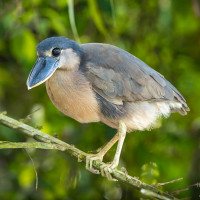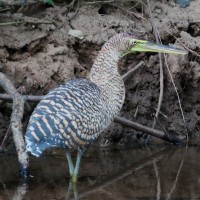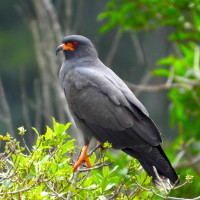Beschreibung
Crooked Tree Wildlife Sanctuary is recognized as a Wetland of International Importance under the Ramsar Convention. The sanctuary contains 6,600 hectares of lagoons, creeks, log wood swamps, broad leaf forest and pine savanna, home to hundreds of species of wildlife. The Jabiru stork is Crooked Tree's most famous resident. Belize has the largest nesting population of these birds in all of Central America. Jabiru storks arrive in November to nest in the lowland pine savannas.
The birding in Crooked Tree Wildlife Sanctuary is phenomonal. Especially when you take a lagoon tour (e.g. from Birds Eye View Lodge). Various species of heron, kingfisher, storks, spoonbill, flycatcher, kite, hawk, rail, ibis and many more.
Details
Zugang
Crooked Tree Wildlife Sanctuary is located 50 km northwest of Belize City, near the village of Crooked Tree, 5 km off the Phillip Goldson Highway. Bus services are available (Monday to Saturday) from Belize City to Crooked Tree Village, but the easiest way to get there is by car. To explore the Crooked Tree Wildlife Sanctuary you'd best take a tour by boat.
Terrain und Habitat
Feuchtgebiet , FlussBedingungen
Flach , SumpfigRundweg
JaIst ein Spektiv nützlich?
NeinGute Beobachtungszeit
GanzjährigBeste Beobachtungszeit
Frühjahrszug , HerbstzugRoute
unbefestigte StraßeSchwierigkeitsgrad der Tour
DurchschnittlichErreichbarkeit
BootBeobachtungshütten oder -türme
NeinZusätzliche Informationen
Boat Tours are organized by Birds Eye View Lodge (see link below). You can also stay there but I'd stayed at a nearby B&B called Beck's Bed & Breakfast which I can recommend.


